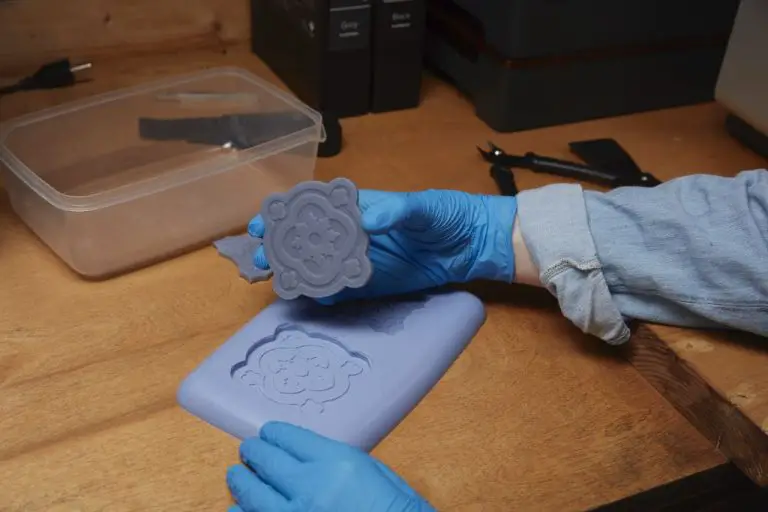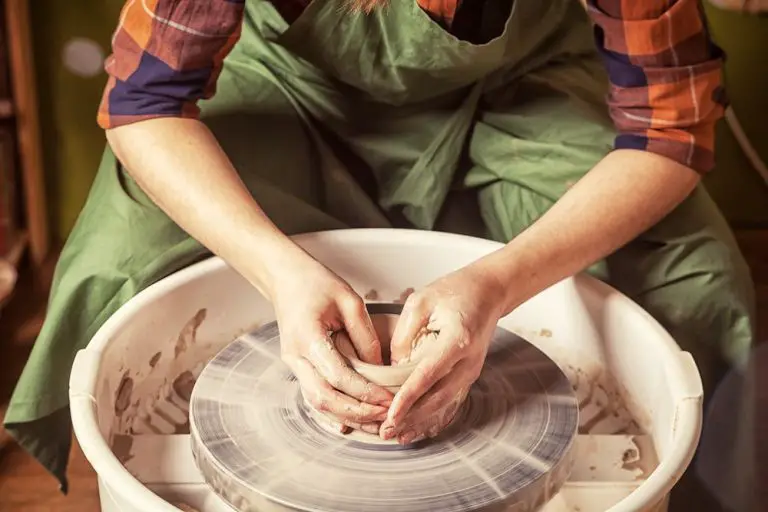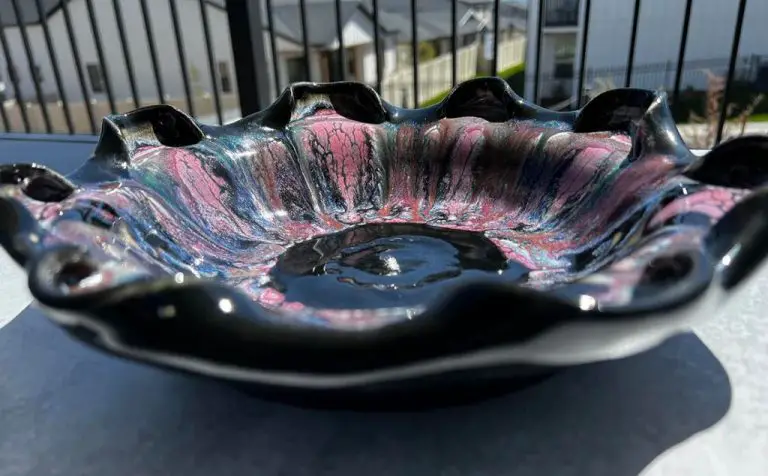What Is An Oil Lamp Usually Made From Clay?
What is an Oil Lamp?
An oil lamp is a vessel used to produce light continuously for a period of time using an oil-based fuel source. Oil lamps are one of the oldest forms of lighting, dating back thousands of years. They were invented prior to the use of candles and consisted of a reservoir that held liquid oil which was then burned to produce illumination. The wick, usually made of plant fibers, would draw the oil up from the reservoir to the top where it could be lit.
The earliest known oil lamps were made of shells and stones and date back to the Upper Paleolithic age between 40,000-12,000 years ago. Ancient civilizations including the Egyptians, Romans, Greeks, Indians and Chinese all used oil lamps, developing them further by incorporating materials like bronze, glass and terracotta. The simple oil lamp design allowed it to be an inexpensive, accessible and portable form of lighting for most of the ancient world.
Oil lamps continued to be used into medieval times and the modern era. Their basic functioning remains similar in that they consist of a fuel chamber, wick and handle to allow for adjusting the wick to increase or decrease the brightness of the flame. While they have been mostly replaced by modern forms of electric lighting, oil lamps are still used in some parts of the world today.
Clay Construction
Clay is the most common material used to construct oil lamps throughout history for several key reasons:
Clay is an abundant, naturally occurring material that has been used for pottery and ceramic objects for thousands of years. It can be dug from the ground, processed, and shaped into vessels with relative ease in most parts of the world.
Clay is an excellent material for containing oil and fire. It maintains its shape and structural integrity when exposed to oil and high temperatures. The ceramic material does not burn or melt easily.
Clay can be molded into almost any shape and decorated with paints, glazes, textures, and more. This allows oil lamps made of clay to come in a diverse array of styles and designs.
There are many different types of clay that can be used for oil lamps, depending on the region and resources available. Some common clays include earthenware, stoneware, ball clay, fire clay, and porcelain.
Earthenware is a coarse clay that can withstand high temperatures. It is frequently used for basic functional pottery objects like oil lamps. Stoneware is a stronger and more durable type of clay that produces thicker ceramic pieces.
Ball clay has high plasticity and strength when fired, making it popular for ceramic oil lamps. Fire clays withstand extremely high temperatures, so they are ideal for oil lamp construction.
Porcelain clays produce smooth, white ceramics that maintain their strength when fired. Porcelain oil lamps are less common but provide a delicate, refined look.
Other Materials
While clay was the most common material for ancient oil lamps, some lamps were also made from other materials like metal, glass, and stone.
Metal oil lamps were sometimes crafted from bronze, iron or gold. Metal lamps were more durable than clay lamps, but they were also heavier and more expensive to produce. The wealthy could afford metal lamps decorated with intricate designs.
Glass oil lamps were rarer but valued for their translucent quality. Glass allowed light to pass through beautifully. The ancient Romans and Egyptians made some glass lamps by blowing and molding glass.
Stone was used occasionally for oil lamps as well. Soapstone, alabaster, marble and limestone were shaped into lamps. Stone lamps could be highly decorative but they were heavy and more difficult to craft.
Parts of an Oil Lamp
Oil lamps have several main parts that work together to produce light. These include:
Wick
The wick is a cord made of flax, cotton, or other fiber that sits partially immersed in the oil. The wick draws up the oil via capillary action and the exposed part of the wick is lit to produce the flame. Wicks are often flat to increase the surface area. They char as they burn but the ashes fall away and allow new parts of the wick to continually draw up oil.
Fuel Chamber
The fuel chamber is the reservoir that holds the oil. It can be a small cup-like container or a more elaborate fuel chamber with handles. This is where the wick sits partially submerged to draw up fuel. The fuel chamber is filled with oil by the user through a filling hole.
Body
The body is the main structural component that houses the wick and fuel chamber. It provides a base for the lamp and allows it to stand upright. The body protects the flame from drafts and helps direct the light. It can be made from clay, glass, or metals.
Nozzle
The nozzle is an extended spout through which the wick protrudes to produce the flame. This helps direct the flame and prevent it from spreading across the fuel chamber. It provides a controlled burning area. The length of the nozzle can affect the brightness of the flame.
Handle
Most oil lamps have a handle of some sort to allow the user to carry and position the lamp. Clay lamps often have small lug handles while metal lamps may have more elaborate handles. The handle provides portability and allows the lamp to be hung or placed in a stable position for lighting.
Fuels
Oil lamps are designed to burn liquid fuels. Traditional fuels were derived from plants and animals. Over the centuries, lamp designs adapted to make the most efficient use of locally available fuels.
One of the most common traditional lamp fuels was olive oil. The olive tree originated in the Mediterranean region, so olive oil was widely used in oil lamps in Europe, North Africa, and the Middle East. Olive oil burns slowly and brightly in lamps. However, it can leave behind carbon deposits that require more frequent cleaning of the lamp.
Animal fats were also widely used as lamp fuels. Tallow, rendered fat from cattle or sheep, was a common fuel in ancient times. Like olive oil, tallow is thick and burns steadily, but can leave behind carbon buildup. Whale oil was popular in coastal regions, but more expensive due to the efforts required to hunt whales.
Some regions used plant oils like sesame, castor, rapeseed, or nut oils to fuel lamps. Leaving behind less residue, these thinner oils typically required a specialized wick design to burn properly. Local availability and cost determined the popularity of various plant-based lamp oils.
Advantages of Oil Lamps
Oil lamps have several notable advantages that made them a popular form of lighting for centuries. Most significantly, they provide a simple, inexpensive way to produce adjustable artificial light.
The basic design and construction of most oil lamps is quite simple. Clay lamps require only a fuel reservoir and a place to hold a wick. Even lamps with more complex designs and embellishments are relatively straightforward devices. This simplicity makes oil lamps easy and inexpensive to produce.
In addition to being simple and cheap, oil lamps allow users to adjust the strength of the light. By raising or lowering the wick, the size of the flame can be controlled. More flame provides brighter illumination, while a lower flame emits less light. This adjustability gives users flexibility in lighting spaces.
Disadvantages of Oil Lamps
While oil lamps have been used for thousands of years, they do come with some downsides that should be considered before using them as a primary lighting source.
One major disadvantage is the fire hazard. Oil lamps utilize an open flame, making them prone to tipping over or getting knocked off a table. This can lead to fires that can quickly spread out of control. Care needs to be taken to place oil lamps on sturdy, level surfaces away from flammable materials.
The fumes produced can also be an issue. Kerosene and other fuels release odor and smoke. This can cause indoor air pollution and negatively impact respiratory health. Proper ventilation is key when burning oil lamps for long periods.
There’s also more maintenance involved in caring for oil lamps. The wicks need occasional trimming and cleaning. Fuel tanks and other components require cleaning as well to prevent clogging. Broken parts may need replacement over time. This is more hands-on effort compared to electric lighting.
Modern Use
While oil lamps are no longer a primary source of light as they once were, they are still used decoratively and functionally today. Many people enjoy oil lamps for the ambiance and historical charm they bring to a room.
Oil lamps remain a practical source of light for some purposes. In parts of the developing world, oil lamps are valued for their simplicity and because they do not require electricity. Kerosene lamps are sometimes used for backup lighting during power outages. Certain types of oil lamps also have utility for outdoor activities where electric lights are impractical.
As decorative pieces, antique oil lamps are prized by collectors. Reproductions of historic lamps are also popular for design accents. The warm, flickering glow of an oil lamp can add coziness and nostalgia to living spaces and events.
While no longer as vital as they once were, oil lamps remain a part of both history and modern life. Their continued use is a testament to the ingenuity of this simple yet elegant technology.
Interesting Facts
Oil lamps have been crafted into many interesting and notable designs over the centuries.
One of the most iconic oil lamp designs is the elaborate Aladdin’s Lamp, which is associated with the Middle Eastern folktale “Aladdin and the Magic Lamp.” These ornate lamps are decorated with detailed metalwork and gemstones.
The ancient Greeks created elegant oil lamps shaped like birds, shells, leaves, and other natural objects. Many beautiful examples have been found by archaeologists at sites like Athens and Corinth.
Some of the largest oil lamps ever made include giant stone and metal lamps built in ancient times to light up temples, palaces, and public spaces. For example, an enormous bronze oil lamp on a towering pillar was constructed in Athens to honor the fleet’s victory at the Battle of Salamis.
In India, iconic deepam lamps made of clay are designed with multiple wicks to produce larger flames. Some of the largest are displayed in temples and can be over 6 feet tall.
More modern oil lamp designs showcase incredible artistry as well. For example, dragon and elephant oil lamps from Thailand and Burma are elaborately shaped and painted by skilled artisans.
Conclusion
In summary, oil lamps have been an important form of illumination throughout history, starting as simple clay vessels filled with plant or animal oils. Even after the advent of electricity, oil lamps continued to be used for their portability, availability of fuel, and ambiance.
The most iconic and common type is an open terra cotta saucer or bowl with a spout, often decorated, and fueled by olive or other plant oils. Regional styles vary widely, but the basic mechanics are consistent. More elaborate oil lamps use glass containers and fuels like kerosene.
While electric lighting has replaced oil lamps in most applications, they are still used for ceremony, decoration, and in areas without reliable electricity access. Understanding the history and functionality of oil lamps provides insight into how our ancestors lived.



